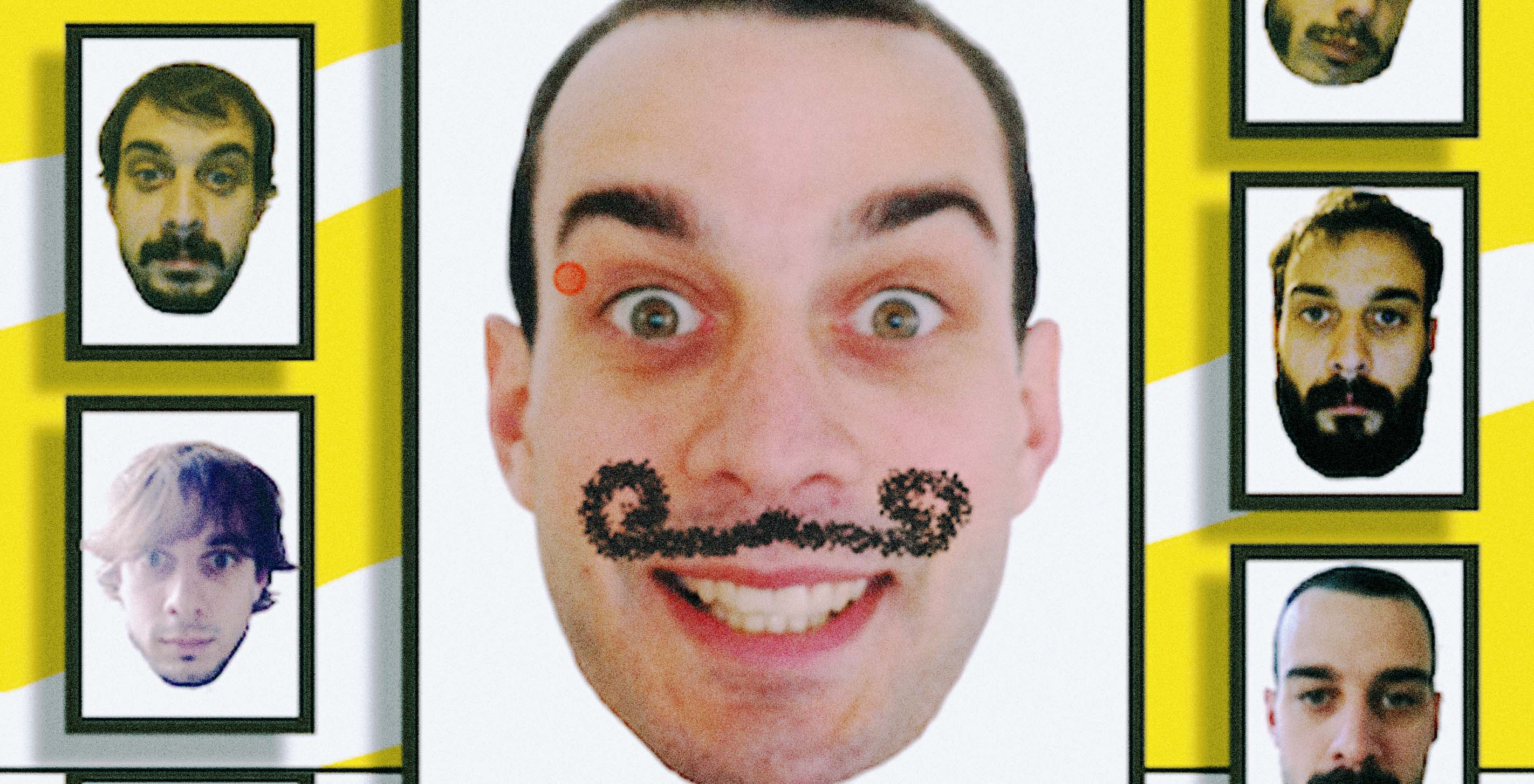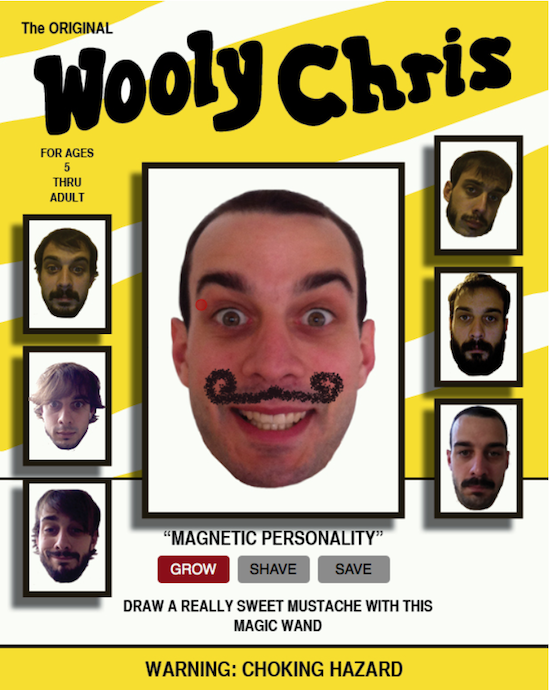

Besides promising to entertain us with his looks on February 29, Chris built an interactive Wooly Willy-app so that other people could help design a great mustache.

Frank Zappa, Burt Reynolds or Frida Kahlo. Plenty of styles to choose from. All of them giving Wooly Chris a new inner life.
In the same way as the full beard allows the secretly 40-something hipster to sport the lifestyle of a 22-year old without anybody asking questions, the mustache gives its bearer a quick key to his personality. You can guess from afar that the guy in a Dali is eccentric; the walrus is probably sweeter than he looks, and the man in the Fu Manchu is not the good guy.
All this digital growing and shaving raised a deeper question: why do men grow mustaches outside of charity?
Research shows that facial hair makes a man look more mature,
says Nancy Etcoff, Assistant Clinical Professor at Harvard Medical School and author of Survival of the Prettiest: The Science of Beauty, when we asked her.
But it also changes the way we perceive facial features and configurations. It can hide the shape of the mouth, or change the perception of the distance between nose and mouth. Beards can exaggerate size of jaws, mutton chops can make a face seem slimmer. And all can hide complexion problems.
So hiding and enhancing?
Yes. Men’s facial hair is like women’s cosmetic.
We’d love to hear what you’re working on, what you’re curious about, and what messy data problems we can help you solve. Drop us a line at hello@fathom.info, or you can subscribe to our newsletter for updates.